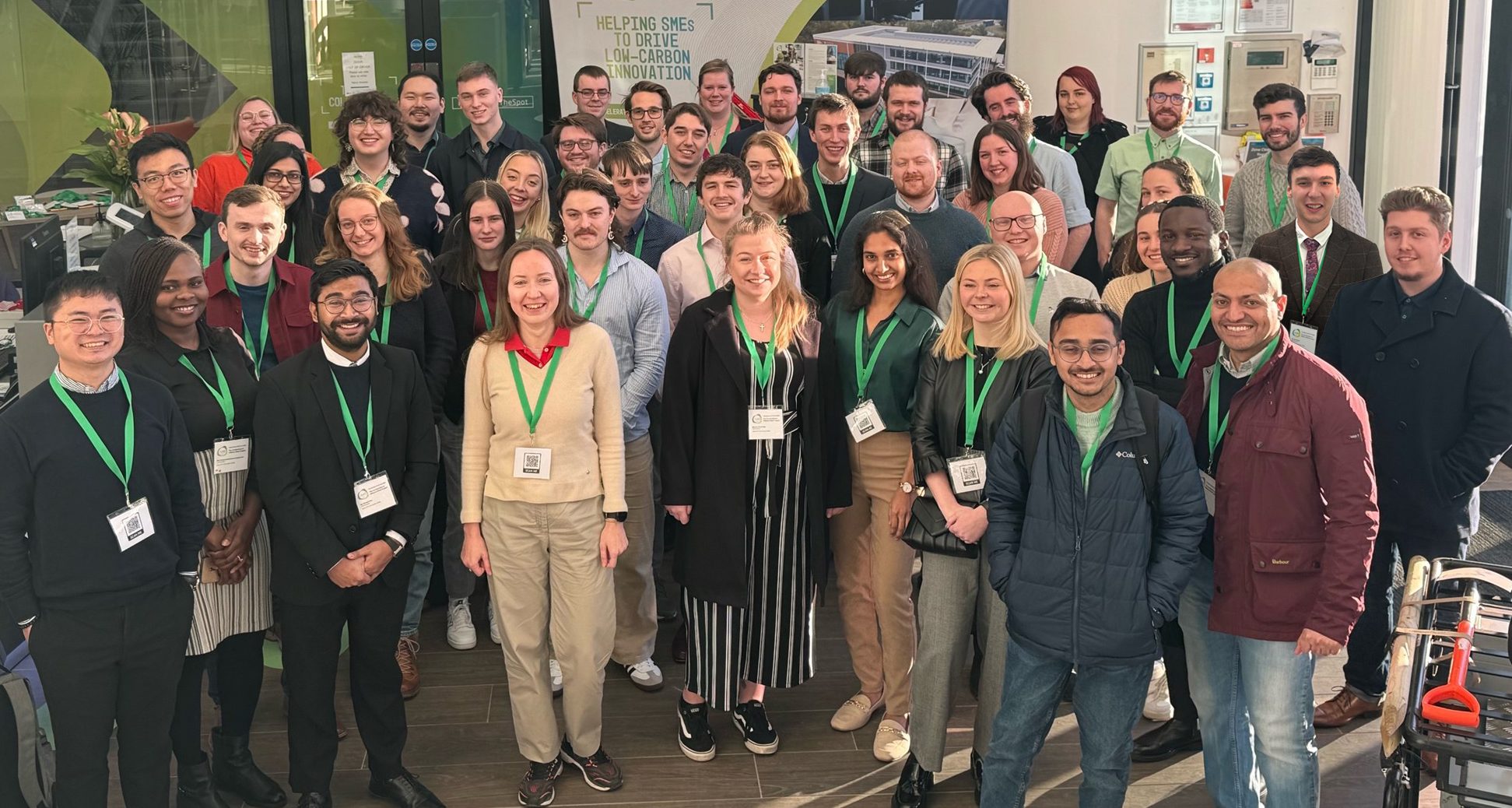




Each cluster of PhDs will support two or more of the major research challenges facing the offshore wind sector.
This will strengthen cross-cohort research collaboration between our postgraduate students, enriching their training and their research impact.
These Clusters will inform the PhD Scholarships offered in each recruitment cycle, from 2024 to 2028.
We are currently recruiting to nine individual research projects, for doctoral students starting with the CDT in September 2024. We will add further projects during this recruitment round, so please check our Scholarships page for updates.

 Read more
Read more This Cluster is focused on addressing the challenges related to dynamic cables used in floating offshore wind turbines. Cables are a critical part of a wind farm and damage is a major cause of repair costs and lost production. As floating wind turbines become more common, these problems are likely to increase due to the complex loads on the cables.
Our research encompasses various activities to address this, including but not limited to:
– Advancing numerical modelling techniques to enhance the accuracy of predicting the shape and motion characteristics of dynamic cables, accounting for the impact of underwater conditions such as tides and waves, as well as their interactions with nearby structures like the touch-down point and the floater.
– Developing cost-effective fibre-optical sensors designed to monitor the curvature and strain loads experienced by the cable during complex motion conditions.
– Conducting experimental validations to test and refine these concepts and technologies.
This cluster of projects revolves around advancing the field of offshore floating wind energy systems through a multidimensional approach.
The first project requires development of innovative probabilistic models for reliability and maintainability assessment of floating wind turbines with the aim to ensure optimal turbine availability. The second project aims to pioneer the development of the next generation of floating offshore wind turbine structures, and the third project employs cutting-edge reinforcement learning techniques for adaptive control in floating wind turbines, aiming to optimise their performance under dynamic and varying conditions.
Together, these projects contribute to the broader goal of pushing the boundaries of innovation in offshore wind energy, addressing both the structural and operational aspects of floating wind turbine systems.
The cluster seeks to pave the way for sustainable and effective utilisation of offshore wind resources, playing a pivotal role in the evolution of renewable energy technologies.
This research cluster is focused on offshore geotechnics with a particular emphasis on solid-structure interaction problems. The seabed represents one of the greatest areas of uncertainty within the offshore wind sector and is at the core of the majority of insurance claims. As the wind energy industry grows, wind farms are being pushed further offshore into deeper waters and new solutions must be considered for attaching offshore wind turbines to the seabed. This includes mooring methods for floating installations, where is essential that both the installation process and the long-term capacity are understood.
In addition to fixing the turbine, it is essential that cables transferring power to the national grid are protected from external aggression and this requires tools to understand the penetration risk of anchors on the seabed as well as assessment of the cable installation methods, all of which involve soil-structure interaction, and deep understanding of the complex behaviour of offshore soils under cyclic and dynamic loading. This cluster focuses on the development of numerical, analytical and empirical methods to tackle the above problems and provide new predictive techniques for the offshore wind industry.
 Read more
Read more The offshore wind sector is rapidly expanding to meet net-zero energy demands, with individual turbines and farms getting larger and further from shore. Atmospheric wakes produced by these turbines are a key control on their power output and dictate wind farm layouts. In addition, wind farms can produce large-scale flow structures which affect atmospheric and sea-surface conditions, leading to poorly understood impacts on the environment.
The POWER cluster addresses this knowledge gap by investigating offshore wind wakes across all scales, from an improved understanding of turbine-scale wake turbulence, to predictions of wind farm wake impacts on regional-scale oceanography. The cluster will employ analytical, numerical, and data-driven techniques to address these challenges, with a supervisory team spanning the Universities of Hull, Sheffield, Loughborough, Durham, and the National Oceanography Centre, with additional support from the University of Minnesota and Imperial College London.
 Read more
Read more This cluster aims to understand and enhance the overall health and productivity of workers in the offshore windfarm sector by focusing on the interplay between physical, psychosocial, and cognitive wellbeing. Research in this cluster will investigate how current work practices and environmental factors impact the wellbeing triad, as well as the health and safety of workers during task execution.
This research will also seek to develop and evaluate novel interventions that aim to improve physical fitness, mental resilience, and cognitive functioning. As such, this cluster seeks to address the holistic wellbeing needs of the industry’s workforce.
The aim of this cluster is to generate evidence-based practices that can enhance the safety and competence of workers involved in offshore wind energy projects. Specifically, projects in this cluster will development and evaluate novel interventions that can equip these professionals with the necessary skills and knowledge to navigate the unique challenges of working in offshore environments, ultimately ensuring the sustainable growth and success of the offshore wind industry.
These projects will provide a crucial step-change towards mitigating risks and promoting safety in this rapidly expanding sector.
Within the Energy Economics research cluster, we focus on a comprehensive examination of various aspects related to offshore wind farm development and its impacts on both the environment and society.
Our projects delve into the economic, environmental, and social dimensions of offshore wind energy, contributing valuable insights to the field.
 Read more
Read more At the heart of sustainability is the recycling and upcycling of waste materials. This cluster will accommodate waste streams from offshore wind production including plastic transition pieces as well as whole blades post decommissioning.
Here, we will expand the circularity of offshore wind by producing a zero-carbon fuel and green chemicals through catalytic pathways using low carbon emitting techniques. We will also augment waste streams to prolong the operational life of ancestor offshore wind turbines through anti-corrosion coatings that can be applied to the wind turbine structure.
Projects within this area will aim to develop new tools and processes that enable better monitoring and understanding of the environmental impacts of changing marine environment due to anthropogenic changes.
Through the development of efficient screening and assessment tools large volumes of data can be collected to inform an understanding of the ecological consequences and benefits due to wind turbines and inform future development.
 Read more
Read more The growth in wind energy production has been one of the UK’s success stories for this decade. This uptake comes with its challenges; turbines need to operate in an aggressive environment, and maintenance in offshore or remote areas is costly.
Reliability and optimum performance of the wind turbine power train, from blades through transmissions and power converter to distribution is essential to keep the cost of electricity generation to a minimum. The nation’s energy landscape is rapidly changing and to maintain the pace will need skilled research engineers and scientists.
This cluster is centred around integration of multiple renewable energy technologies integrated within a single offshore wind energy project. This integration aims at optimise energy production, enhance grid stability, and boost the efficiency of the overall offshore wind form.
There are several components that could be part of a hybrid offshore wind farm including photovoltaic arrays (to provide an additional renewable energy source), batteries (to ensure a consistent power supply), electrolysers (to produce green hydrogen necessary to decarbonise hard-to-abate sectors).
Operations and Maintenance (O&M) costs form a significant element in offshore wind farm budgets. Therefore reducing O&M costs can have a major impact on reducing energy costs to consumers.
Utilising AI, including machine learning, this cluster will make significant improvements in the way that maintenance is planned and implemented.
Reliability and availability are two key requirements in offshore wind where faults can result in catastrophic failures. Furthermore, any downtime caused by faults or maintenance results in significant loss of revenues. With the aim of reducing faults and increasing availability, we will investigate advanced solutions for real-time monitoring of the condition and health of off-shore wind assets during their lifetime.
We will use advanced tools including Machine Learnings and Digital Twins to monitor electrical equipment, generators, converters, mechanical and structural components such as blades etc. The aims are not only to avoid the risk of catastrophic failures but also to replace costly periodic routine maintenance with condition-based maintenance to be performed only when the remaining useful life decreases below a predefined threshold.
This cluster aims to develop and deploy innovative AI-powered technologies to optimise the operation of wind turbine farms, improve safety, and reduce costs. The cluster will focus on developing AI-powered forecasting and optimisation algorithms to predict wind conditions and optimise turbine performance in real time, as well as AI-powered safety systems to detect and prevent potential hazards. The cluster is expected to have a significant impact on the wind energy industry by making wind farms more efficient, reliable, and competitive, and accelerating the transition to a clean energy future.
For an informal discussion, call +44 (0) 1482 463331
or contact auracdt@hull.ac.uk